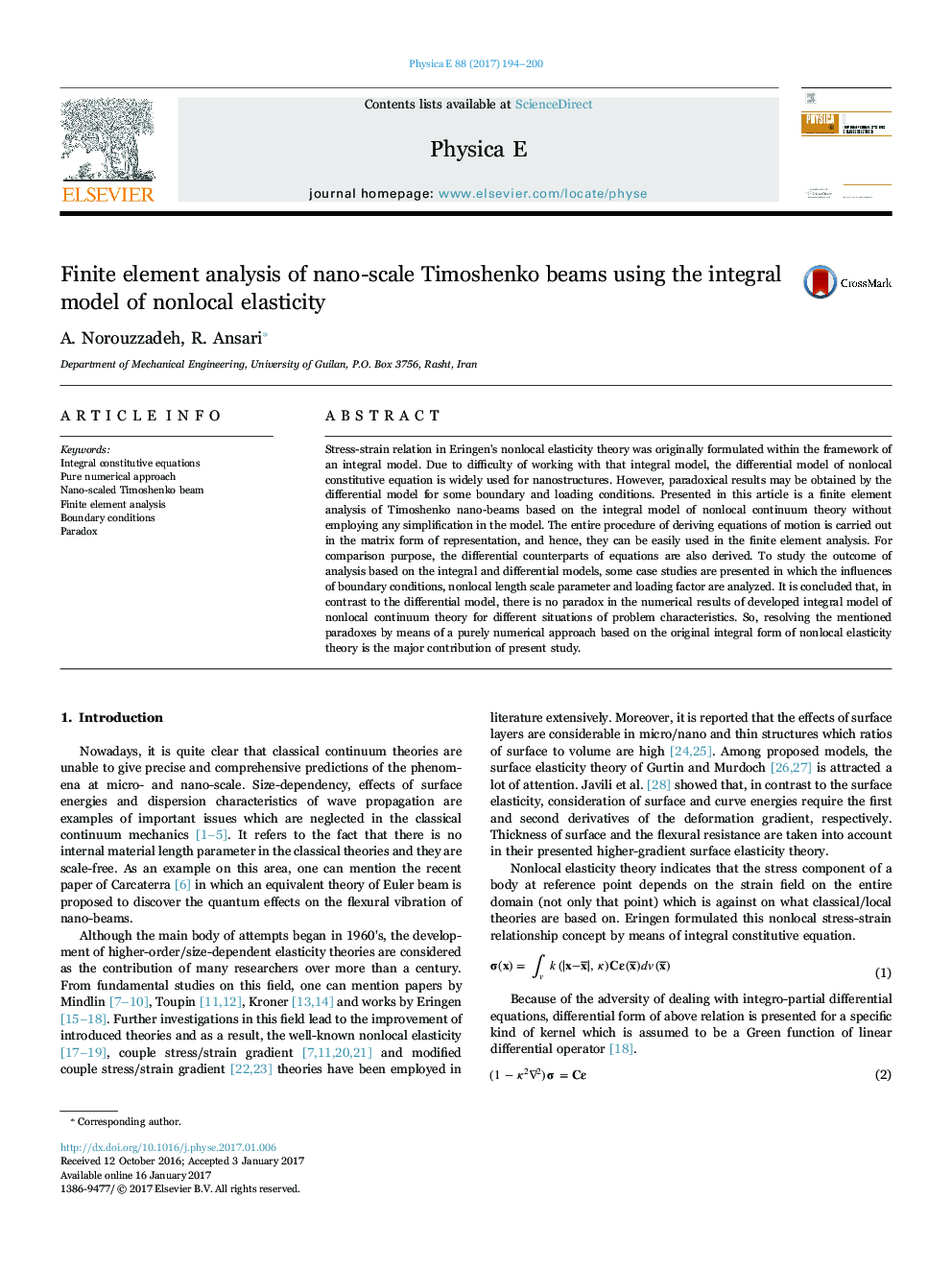| Article ID | Journal | Published Year | Pages | File Type |
|---|---|---|---|---|
| 5450218 | Physica E: Low-dimensional Systems and Nanostructures | 2017 | 7 Pages |
Abstract
Stress-strain relation in Eringen's nonlocal elasticity theory was originally formulated within the framework of an integral model. Due to difficulty of working with that integral model, the differential model of nonlocal constitutive equation is widely used for nanostructures. However, paradoxical results may be obtained by the differential model for some boundary and loading conditions. Presented in this article is a finite element analysis of Timoshenko nano-beams based on the integral model of nonlocal continuum theory without employing any simplification in the model. The entire procedure of deriving equations of motion is carried out in the matrix form of representation, and hence, they can be easily used in the finite element analysis. For comparison purpose, the differential counterparts of equations are also derived. To study the outcome of analysis based on the integral and differential models, some case studies are presented in which the influences of boundary conditions, nonlocal length scale parameter and loading factor are analyzed. It is concluded that, in contrast to the differential model, there is no paradox in the numerical results of developed integral model of nonlocal continuum theory for different situations of problem characteristics. So, resolving the mentioned paradoxes by means of a purely numerical approach based on the original integral form of nonlocal elasticity theory is the major contribution of present study.
Related Topics
Physical Sciences and Engineering
Materials Science
Electronic, Optical and Magnetic Materials
Authors
A. Norouzzadeh, R. Ansari,
